River Bass Fishing: All You Need to Know (Comprehensive Guide)
Share this article with every angler you know!
Across the USA, you have a variety of water types to target bass in. From tiny local farm ponds to massive lakes you couldn’t possibly explore in a single day or two, all the way down to the little streams and creeks working their way through wooded areas and deep man made reservoirs, there is no shortage of options in the US. To make it even more exciting, each of those options tends to vary dramatically depending on conditions and the season.
However, rivers tend to be the spots that many casual fishermen stay away from. There are some good reasons for that, but eventually, you need to hop on the river and see what it has to offer. The fishing tends to be exciting, and you usually have to take a whole new approach than what you’re used to.
Today, we’re going to go over some of the unique challenges presented by river bass fishing, popular techniques to get yourself through the learning curve, and some helpful resources to make sure you get the most of every trip you go on.
Let’s get started.
Newsletter Signup
How is River Bass Fishing Different Than Other Popular Fishing Spots?
At face value, it shouldn’t matter whether you’re fishing in a pond, lake, reservoir, dam, river, or anything else. They’re all just bodies of water, right? Well, there are some differences.
A river is actively moving in one direction as it goes to join up with the tributaries and eventually the ocean. So, it behaves differently than a static lake or pond.
Predominantly, you have to deal with the constant movement of the water. This is a problem in smaller water bodies during harsh wind conditions when the water is choppy, but it’s practically always a problem when you’re on a river.
If you’re using a natural bait rig, you can expect to constantly reset as your rig makes its way downriver whether you like it or not. If you’re using lures, you have to take the movement of the water into consideration, or you can throw off the presentation of your lure.
Then, there’s the inclusion of unique obstacles. With water movement, you tend to get driftwood, sand bars, and commercial boats. It’s not uncommon to be fishing on a river and suddenly have to deal with a lot more water disruption because a river barge or casino boat floated by.
It’s a lot more noticeable than what you get with bass boats on the lake. Recreational water sports such as water skiing and paddleboarding are also more common. While there are usually areas separated for each type of user on heavily trafficked riversides, some more out-of-the-way spots don’t tend to have that, and you need to keep your eyes open a lot more.
Shoreline bass fishing on the river also tends to produce some challenges. You might have issues getting on the bank itself and need to fish from a manmade overhang. When you’re 20+ feet over the water, you’re using more lines to get to your desired depth, and you’re dead-lifting fish up that massive distance; making it easier to lose the fish and your rig.
There are also the dangers of rocky walking areas and changing tides when you do manage to get right up on the water. So, you have to be a little more careful. Even in a boat, drift is a bigger problem.
When you’re on the river, many of your favorite techniques still work, but you might need to adjust them. That’s not always the case, though. Sometimes, it’s still relatively calm, and it depends on where you’re fishing on the river. It’s a lot different to fish on a calm segment than it is to fish around a dam that’s constantly releasing or near the end where it’s joining with a tributary.
Techniques for Bass Fishing on the River
So far, we’ve depicted river fishing as a constant fight against the river’s flow, but it’s not always like that, and as you’ll see, many of the same strategies you’re used to using are still effective. We’re going to go over some of the most popular techniques and highlight when they’re useful and when you should stay away from them.
Fishing for Bass with Live Bait:
Live bait fishing on a river tends to be a bit different than on a lake. With most rigs, it’s fairly difficult to keep the bait where you want it, and it’s often not a good idea to let it drift due to crossing lines unintentionally or losing track of your lure until it ends up on a bank downstream. In general, your standard bobber rig isn’t going to be a good idea, and simply free-floating live bait also tends to be the wrong way to go about it.
Instead, we recommend using a Kentucky rig, or you can get away with a heavily weighted single-hook rig that uses the same concept. Just leave the swivel and secondary leader off the setup.
With egg weights or sinkers in the one to two-ounce range, you should be able to hold baitfish such as shad in one spot without any issues, and you don’t have to worry about losing track of your rig as the river moves.
An issue with this is that you have to learn how to detect a bite without a bobber, and a lot of large catfish such as flatheads tend to hang out in a lot of America's rivers. So, you can go from targeting a 10-pound bass to beat your personal best, to easily picking up a 75-pound flathead that takes an hour to reel in; if it doesn’t snatch your entire rig right away. Especially if you’re using larger pieces of bait or whole bluegill.
You can help resolve both those issues by using a rod alarm and switching over to slightly heavier bass equipment. Your standard medium Ugly Stik isn’t going to cut it if you do hook into something massive, but you don’t want to go too heavy to the point you rip bass out of the water with a broomstick.
Just make sure you have enough power on your side to handle the occasional river monster. Using smaller bass-friendly baits and fishing higher in the water column can also help reduce unwanted catches.
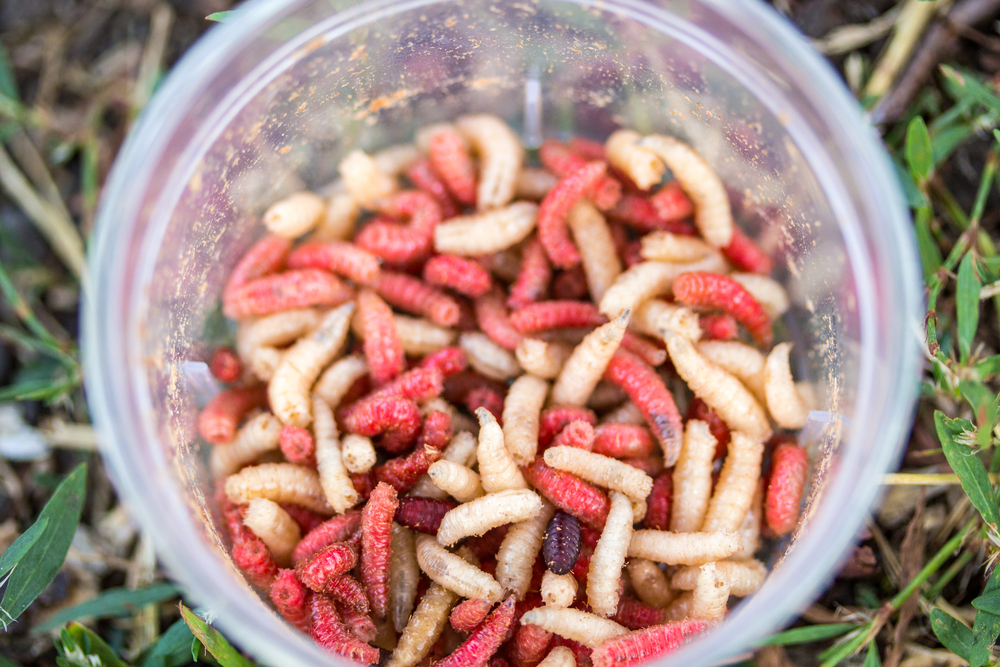
Fishing for Bass with Lures:
Like basically all other forms of fishing, this is where it tends to get more complicated. It’s not as easy as sinking a live shad or some cut bait into the river and waiting for a bite. You don’t have to worry about drift as much, but the way you approach your presentation is absolutely crucial.
This comes down to common bass fish behavior patterns; they don’t tend to swim against the current. Especially not in a river where that current is far more tiring and likely to cause them harm.
Instead, when the river is really moving along, they tend to swim with it or get out of the current and stick to shore areas where they can save their energy. Because of this, if the river is particularly choppy, you usually want to cast upstream and pull your lure downstream while you’re presenting it.
This is something you automatically do most of the time when fishing a lake, because the waves come to the shore, and you’re usually casting out and reeling it back to the bank unless you’re in a boat. The water is often a lot calmer, too.
By doing this, you can mimic the natural movement patterns of the baitfish in the water, and your lure won’t stand out as some insane fish fighting against all odds to work its way upstream. That goes a long way toward tricking a bass.
It can also help to fish around small outcroppings and coves along the river’s edge rather than casting directly into the middle of it. Fish often come into those spots for shelter, to find smaller fish, and to relax after pushing themselves into the harsher parts of the river. It’s easier to present your lures this way, and it’s easier to detect bites.
One aspect of this approach that is a bit more difficult is bite detection. On a calm lake or pond, you’re able to see the slightest twitch of your rod tip and understand there’s a fish biting. You can also watch your line twitch abnormally in the water or drift side to side. That’s not as easy in a river.
Your line will drift a bit as it’s hit by waves and then self-correct as you reel it in, and the waves can also drag your rig and line around enough to make subtle twitches that have nothing to do with fish activity. If you’ve ever tried to fish on a very windy day, you’ve likely noticed this.
This can cause you to hesitate when setting the hook, or you might set the hook while nothing is there and ruin your presentation. It more or less just takes time to get used to that.
Best Lures and Setups for River Fishing
Now that you know what to expect, let’s talk about the gear you need to take along. First and foremost, you almost certainly want to work with a heavier rod and reel setup. While you’re targeting bass, you will have larger fish to contend with occasionally, and a sturdier rod will prevent you from misinterpreting every little bump on your rod tip as a bite.
Again, don’t bring a glorified broomstick like you would if you were targeting monster blues and flatheads, but make sure you’ve got enough power on your side to handle the occasional surprise. Especially if you’re working with live bait or cut bait.
Beyond that, here are some of the lures we recommend.
1: Crankbait
A crankbait is great for making a lot of noise and getting attention even when the water is choppy and breaking up your presentation. It’s also nearly impossible to present poorly unless you cast it downstream. This can take away a lot of the problems that come with casting into the harsher waters and make your transition into river fishing a bit easier.
2: Football Jigs
You can avoid a lot of the chop and go straight to the fish if you tie on a football jig, cast it upstream, and work it down along the bottom. It won’t move around on its own much, the skirt will be passively active on top of the motions created by your presentation technique, and overall, it’s another easy way to get started. The issue is getting snagged on large driftwood and unseen obstacles.
3: Large Swimbaits
If you want to target larger bass, this is the perfect opportunity to bust out your larger swimbaits. If you can cast one far upstream and give it a natural retrieval back, you’re sure to entice some of the biggest bass in the river. Just be ready in case such a substantial treat attracts a bigger fish.
When to Fish at the River?
For the most part, the timing of your fishing trip should be the same as it would be for a lake or anything else. The water conditions are mostly the same. However, you want to avoid a few problems.
First, know about any dams in the area and when they’re set to release if they’re close to the spot you’re fishing. A sudden rush of water can throw off your entire trip, and it’s best to fish before that or after the river has stabilized a bit. You can also move downstream to a point where that’s not as big of a deal.
It’s also helpful to know when recreational water sports tend to take place. You’re not going to avoid commercial boats, but you can time your trip to avoid people on jet skis, speedboats, sailboats, and other annoying obstacles that typically don’t care to respect an angler’s space. This is kind of like getting your fishing in around a boat ramp before or after the boaters get there.
Fish smarter with the Bass Forecast Fishing App
If you found this guide on river bass fishing useful, head over to the Bass Forecast fishing app.
You can get in-depth information about a river’s best fishing times and information regarding everything else we’ve talked about, such as the best bass fishing lures, bass fishing gear essentials, tips for choosing the best rod for bass fishing, and more.



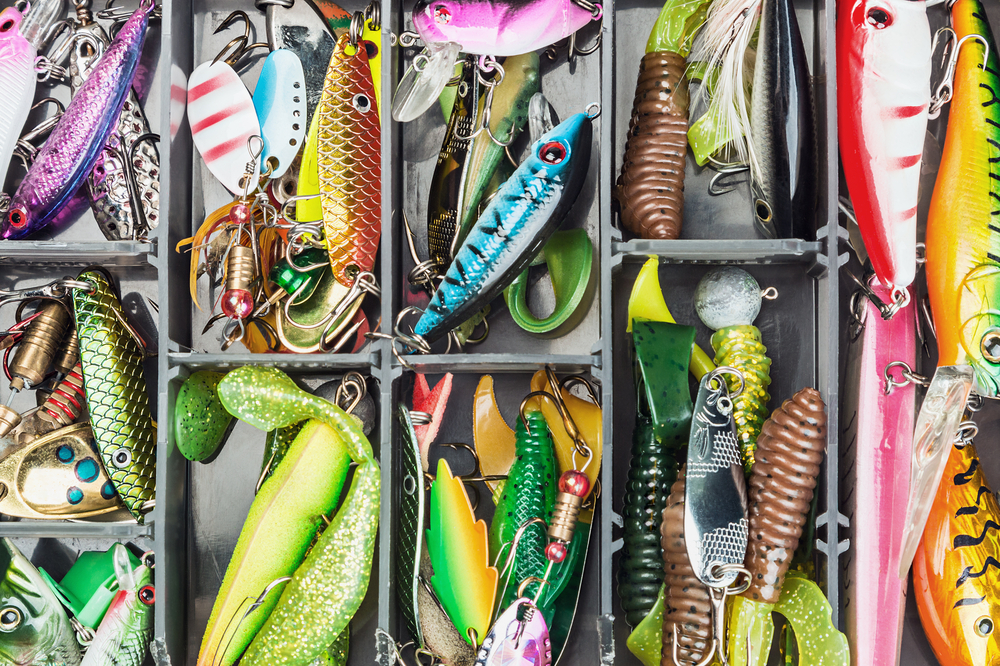
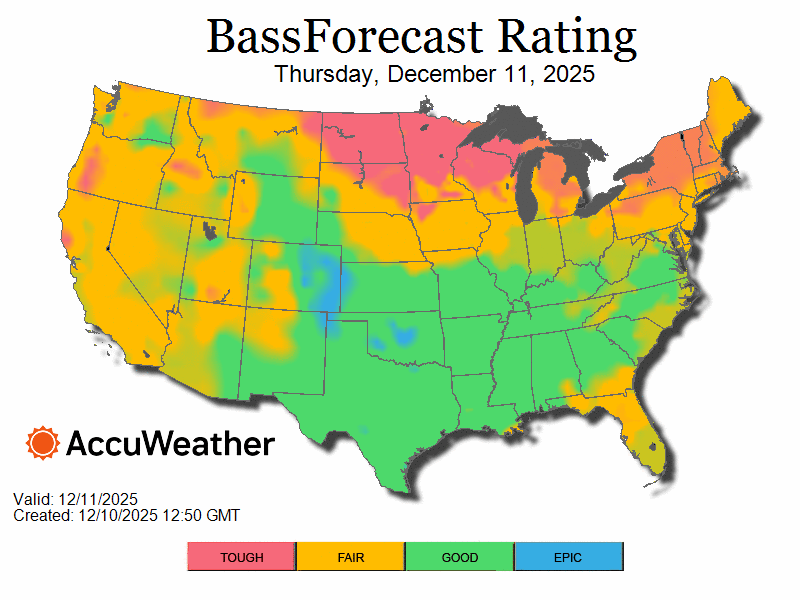
.png)
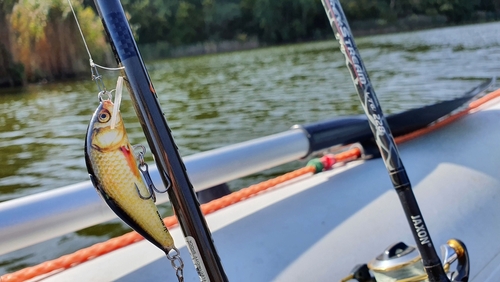

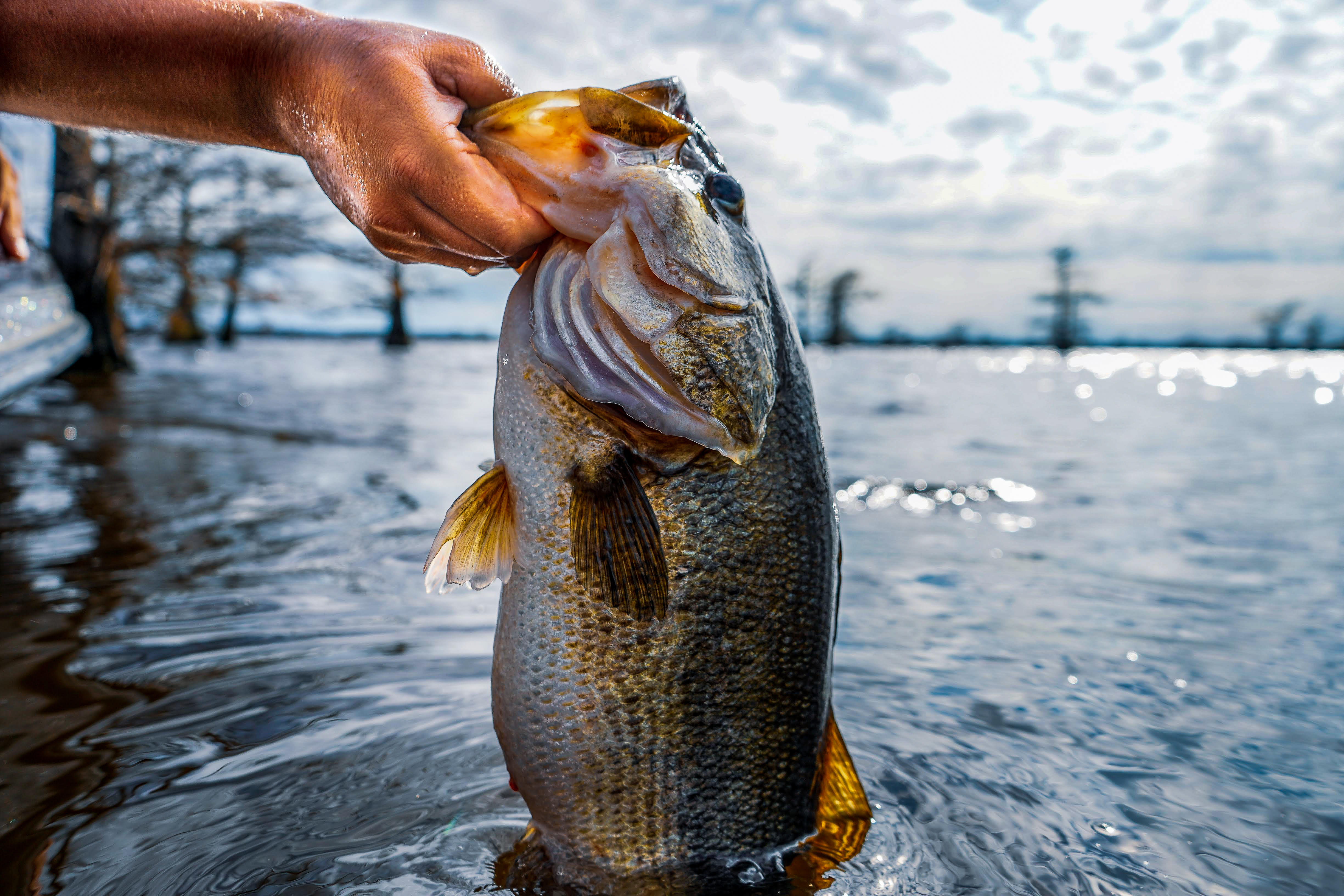
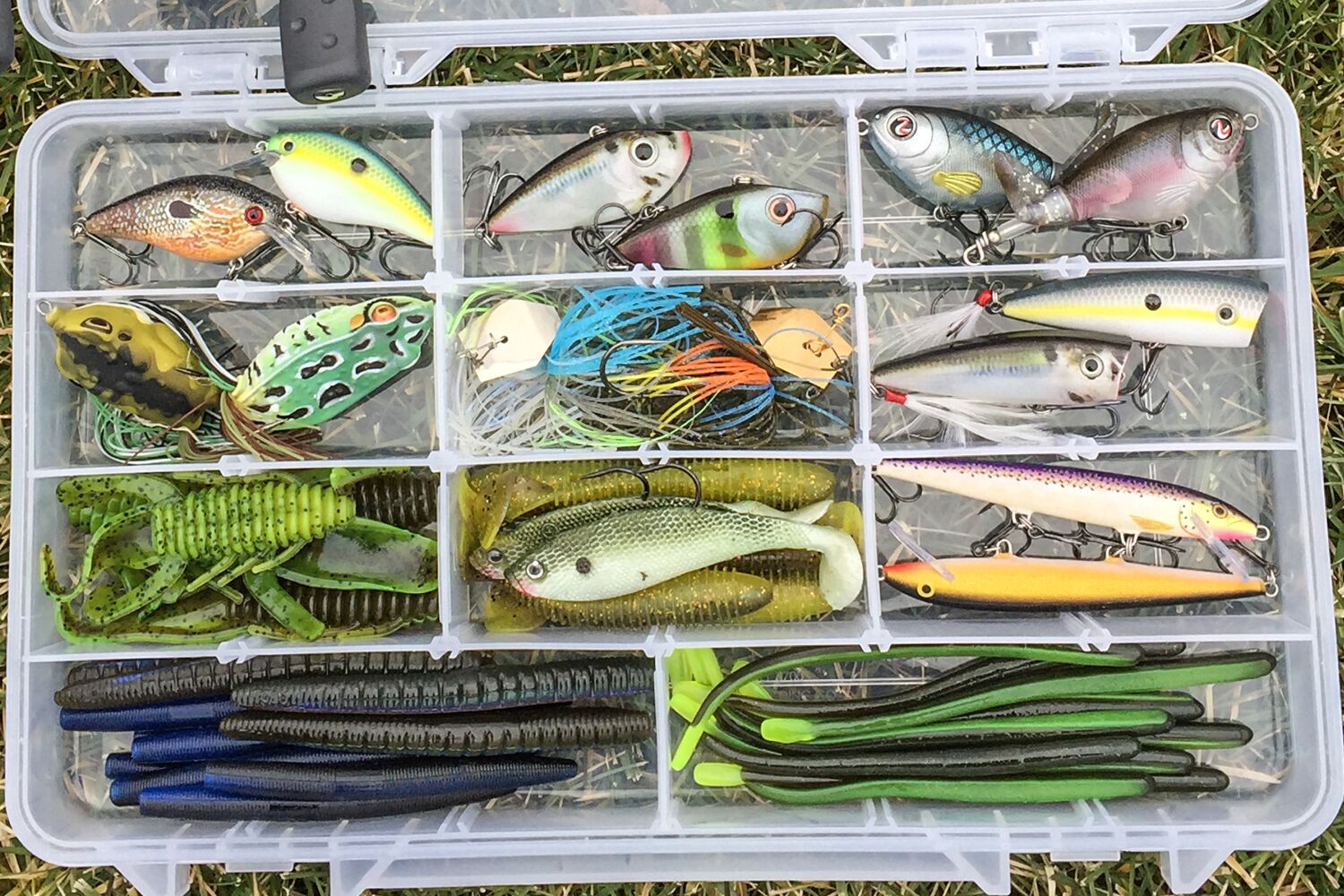
.png)
.png)